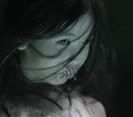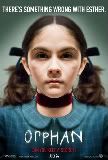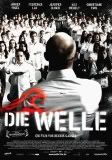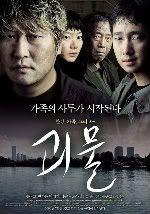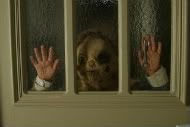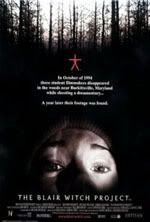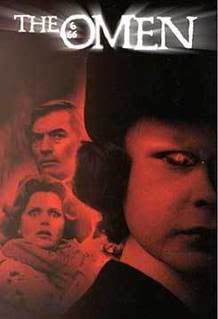Production
• Different Genres
• Horror (sub-genres - vampire, zombie, ghost, slasher, monster)
• Thriller (sub genres – crime caper, detective, film noir)
• Comedy (sub genres – road movie, romantic, zany, dark)
• Social Drama
• War (usually historical)
• Sci-Fi
• Musical
• Fantasy
• Animation
Target Audiences
• White male largely student 15 – 25
• White female largely student 15 -25
• Female Married with children (25 – 45)
• Professional male (Arthouse cinema 30 – 50)
• Working class male/female (multiplex 16 – 40)
• Young teen female 12 – 15
• Young Teen male 12 - 15
• Fans of specific genres
• Fans of book to film
• Cinema as a social night (male and female 20 – 40)
• Additional audience drawn by viral marketing
• Multi cultural segments (Asian)
Monday 24 May 2010
Friday 21 May 2010
2008 Int 2 Past Paper – Analysis Q1
A study of Narrative deals with narrative structure and narrative codes. With reference to a text you have studied, explain the narrative codes and structure
and how they are linked to at least one other key aspect.
How to tackle this question
Stage 1
Break down the question so you know what you’re being asked.
Media Analysis questions always have a key phrase(s) which is what they want you to respond to.
So you have to show your knowledge of Narrative and one other key aspect Audience/Representation but it must be angled towards the key phrase!
The key phrase in this question is how they are linked
The thing to remember is that the way the question is phrased you should try to refer to how they are linked in the two main sections of your essay
Stage 2
Now you need to think about the links between narrative and either representations or audience and how it can be discussed in relation to Let the Right One In.
You need to be clear which structures you will discuss. Notice that the question mentions codes as well as structures. So you could discuss either CNF, Todorov or Strauss. But you would also need to touch on Barthian codes such as enigmas and action codes.
But how is narrative linked to one other key aspect?
Linked to representations!
What is interesting about LTROI is that its representations are quite challenging. After all that is why we studied the film. Eli is crucial here – she is a monster and a friend to Oskar.
She is the narrative disruption
She is also the narrative resolution
These are aspects of narrative change normally associated with male constructs!
The representations challenge the Vampire genre and the audience segments and they also affect the narrative structures of the film!
Linked to Audience!
Segments of the audience will find LTROI a challenge to their own assumptions which may well see females and males as more traditional constructs.
Audience members might also find it challenging and pleasurable that the female construct of Eli drives the narrative.
There are plenty of pleasures in the narrative for the audience segments such as gore (visceral) and cognitive pleasures (who is Eli? Who is Hakan? Will Oskar discover who Eli is?)
Stage 3
Now it is time to tackle the writing of the essay.
Since the examiner has provided you with a key phrase with which to discuss the key aspects it stands to reason that you should reference this key phrase in your response
For example somewhere in your opening paragraph you might want to write something like
Let The Right One In is a film which takes the vampire sub genre in a new direction and which provides an interesting links between the key aspects of narrative and representation (or audience)
Obviously narrative will be the first part of your essay since that is the main focus of the question so you will talk about structures and codes in that section making integrating points about the other key aspect where you can.
In the other section either on Narrative and Audience you must also use the key phrase when you can. For example discussing narrative you might say…
Applying Todorov’s narrative formula to LTROI reveals interesting links to represenatations since the main female construct disrupts the equilibrium and although she is the otherness she also attempts to repair the disequilibrium.
If linking with Audience you can refer to the key phrase of the question by looking at the pleasures and challenges that the segments of the TA may have for example…
Narrative is linked to audience as they will take many pleasures from the narrative structures such as the arrival of the disequilibrium in the shape of Eli. It is also linked with narrative codes and audience pleasures as much of the TA segment will find visceral pleasuresin the film and some will enjoy its enigmas.
and how they are linked to at least one other key aspect.
How to tackle this question
Stage 1
Break down the question so you know what you’re being asked.
Media Analysis questions always have a key phrase(s) which is what they want you to respond to.
So you have to show your knowledge of Narrative and one other key aspect Audience/Representation but it must be angled towards the key phrase!
The key phrase in this question is how they are linked
The thing to remember is that the way the question is phrased you should try to refer to how they are linked in the two main sections of your essay
Stage 2
Now you need to think about the links between narrative and either representations or audience and how it can be discussed in relation to Let the Right One In.
You need to be clear which structures you will discuss. Notice that the question mentions codes as well as structures. So you could discuss either CNF, Todorov or Strauss. But you would also need to touch on Barthian codes such as enigmas and action codes.
But how is narrative linked to one other key aspect?
Linked to representations!
What is interesting about LTROI is that its representations are quite challenging. After all that is why we studied the film. Eli is crucial here – she is a monster and a friend to Oskar.
She is the narrative disruption
She is also the narrative resolution
These are aspects of narrative change normally associated with male constructs!
The representations challenge the Vampire genre and the audience segments and they also affect the narrative structures of the film!
Linked to Audience!
Segments of the audience will find LTROI a challenge to their own assumptions which may well see females and males as more traditional constructs.
Audience members might also find it challenging and pleasurable that the female construct of Eli drives the narrative.
There are plenty of pleasures in the narrative for the audience segments such as gore (visceral) and cognitive pleasures (who is Eli? Who is Hakan? Will Oskar discover who Eli is?)
Stage 3
Now it is time to tackle the writing of the essay.
Since the examiner has provided you with a key phrase with which to discuss the key aspects it stands to reason that you should reference this key phrase in your response
For example somewhere in your opening paragraph you might want to write something like
Let The Right One In is a film which takes the vampire sub genre in a new direction and which provides an interesting links between the key aspects of narrative and representation (or audience)
Obviously narrative will be the first part of your essay since that is the main focus of the question so you will talk about structures and codes in that section making integrating points about the other key aspect where you can.
In the other section either on Narrative and Audience you must also use the key phrase when you can. For example discussing narrative you might say…
Applying Todorov’s narrative formula to LTROI reveals interesting links to represenatations since the main female construct disrupts the equilibrium and although she is the otherness she also attempts to repair the disequilibrium.
If linking with Audience you can refer to the key phrase of the question by looking at the pleasures and challenges that the segments of the TA may have for example…
Narrative is linked to audience as they will take many pleasures from the narrative structures such as the arrival of the disequilibrium in the shape of Eli. It is also linked with narrative codes and audience pleasures as much of the TA segment will find visceral pleasuresin the film and some will enjoy its enigmas.
Tackling Exam Questions
2007 Past Paper – Analysis Q3
With reference to Representation and at least two other key aspects, analyse the ideological discourse(s) of a text you know well.
How to tackle this question
Stage 1
Break down the question so you know what you’re being asked.
Media Analysis questions always have a key phrase(s) which is what they want you to respond to.
So you have to show your knowledge of Representations, Narrative and Audience but it must be angled towards the key phrase!
The key phrase in this question is ideological discourse
The thing to remember is that the way the question is phrased you should try to refer to ideological discourse in all the main sections of your essay (Representations Narrative Audience)
Stage 2
Now you need to think about ideological discourse and how it can be discussed in relation to Let the Right One In.
Ideology relates to the mindset/beliefs of the filmmakers. Quite often their deeper beliefs about gender etc are sub-consciously reflected in the film.
So DO NOT say that they put their ideological views in deliberately!
What is interesting about LTROI is that its representations are quite challenging. After all that is why we studied the film.
The representations challenge the Vampire genre and the audience segments and they also affect the narrative structures of the film!
How do they do this? Because the central character of Eli is a challenging female construct. The other central character Oskar is a challenging male construct.
Segments of the audience will find this a challenge to their own ideological discourse which may well see females and males as more traditional constructs.
Audience members might also find it challenging and pleasurable that the female construct of Eli drives the narrative.
She is the narrative disruption
She is also the narrative resolution
These are aspects of narrative change normally associated with male constructs!
Stage 3
Now it is time to tackle the writing of the essay.
Since the examiner has provided you with a key phrase with which to discuss the key aspects it stands to reason that you should reference this key phrase in your response
For example somewhere in your opening paragraph you might want to write something like
Let The Right One In is a film which takes the vampire sub genre in a new direction and which provides an interesting challenge to its audience in terms of ideological discourse..
Obviously Representations will be the first part of your essay since that is the main focus of the question so you will talk about ideology in that section (e.g. that the otherness is both a monstrous female and a female who provides redemption), making integrating points about the other key aspects where you can.
In the other two sections on Narrative and Audience you must also use the key phrase when you can. For example discussing narrative you might say…
Applying Todorov’s narrative formula to LTROI reveals interesting aspects of ideological discourse since the main female construct disrupts the equilibrium and although she is the otherness she also attempts to repair the disequilibrium.
For Audience you can refer to the key phrase of the question by looking at the ideological assumptions that the segments of the TA may have
The audience obviously comes to the cinema with their own needs and gratifications and ideological assumptions. Their reading and decoding of the film will be challenged by the representations and narrative which present a different ideological discourse to their own…
With reference to Representation and at least two other key aspects, analyse the ideological discourse(s) of a text you know well.
How to tackle this question
Stage 1
Break down the question so you know what you’re being asked.
Media Analysis questions always have a key phrase(s) which is what they want you to respond to.
So you have to show your knowledge of Representations, Narrative and Audience but it must be angled towards the key phrase!
The key phrase in this question is ideological discourse
The thing to remember is that the way the question is phrased you should try to refer to ideological discourse in all the main sections of your essay (Representations Narrative Audience)
Stage 2
Now you need to think about ideological discourse and how it can be discussed in relation to Let the Right One In.
Ideology relates to the mindset/beliefs of the filmmakers. Quite often their deeper beliefs about gender etc are sub-consciously reflected in the film.
So DO NOT say that they put their ideological views in deliberately!
What is interesting about LTROI is that its representations are quite challenging. After all that is why we studied the film.
The representations challenge the Vampire genre and the audience segments and they also affect the narrative structures of the film!
How do they do this? Because the central character of Eli is a challenging female construct. The other central character Oskar is a challenging male construct.
Segments of the audience will find this a challenge to their own ideological discourse which may well see females and males as more traditional constructs.
Audience members might also find it challenging and pleasurable that the female construct of Eli drives the narrative.
She is the narrative disruption
She is also the narrative resolution
These are aspects of narrative change normally associated with male constructs!
Stage 3
Now it is time to tackle the writing of the essay.
Since the examiner has provided you with a key phrase with which to discuss the key aspects it stands to reason that you should reference this key phrase in your response
For example somewhere in your opening paragraph you might want to write something like
Let The Right One In is a film which takes the vampire sub genre in a new direction and which provides an interesting challenge to its audience in terms of ideological discourse..
Obviously Representations will be the first part of your essay since that is the main focus of the question so you will talk about ideology in that section (e.g. that the otherness is both a monstrous female and a female who provides redemption), making integrating points about the other key aspects where you can.
In the other two sections on Narrative and Audience you must also use the key phrase when you can. For example discussing narrative you might say…
Applying Todorov’s narrative formula to LTROI reveals interesting aspects of ideological discourse since the main female construct disrupts the equilibrium and although she is the otherness she also attempts to repair the disequilibrium.
For Audience you can refer to the key phrase of the question by looking at the ideological assumptions that the segments of the TA may have
The audience obviously comes to the cinema with their own needs and gratifications and ideological assumptions. Their reading and decoding of the film will be challenged by the representations and narrative which present a different ideological discourse to their own…
Friday 15 January 2010
Let The Right One In
The title is worth some consideration. On one level it refers to the concept of inviting a vampire into your home. However the title also touches on the intertextual element of the film - the growing affection between Eli and Oskar and their isolation from the 'wrong ones'. It could also refer to the sleepy community which does not realise it has let a monster into its midst.
Eli's challenge to the audience is considerable. We have cultural views about little girls. Eli is a monster who is also a little girl and this evokes sympathy and horror at the same time. Her representation is the last place we would expect evil to reside. Oskar ultimately accepts Eli. This is unlike previous Dracula movies such as Hammer Horror where there is a form of negotiation between the Vampire and the community. In LTROI there is more than negotiation, there is warmth and full acceptance of the abject. In a way for the narrative to be fully resolved the monsterous Eli has to be accepted by the audience as the 'right one.' This challenges our own cultural views about good and evil
Eli's challenge to the audience is considerable. We have cultural views about little girls. Eli is a monster who is also a little girl and this evokes sympathy and horror at the same time. Her representation is the last place we would expect evil to reside. Oskar ultimately accepts Eli. This is unlike previous Dracula movies such as Hammer Horror where there is a form of negotiation between the Vampire and the community. In LTROI there is more than negotiation, there is warmth and full acceptance of the abject. In a way for the narrative to be fully resolved the monsterous Eli has to be accepted by the audience as the 'right one.' This challenges our own cultural views about good and evil
Monday 21 September 2009
Sunday 6 September 2009
Barthes and his Codes

Roland Barthes was a thinker closely associated with Levi-Strauss. he came to the conclusion that narratives could be understood in terms of codes.
The three main codes were enigma, action and cultural. All these codes interlinked. Enigmas were snares which hooked the audience into the film. Although it is not always obvious to the audience why enigmas occur (such as why is David so interested in Michael) they enjoy trying to discover the solutions.
Action codes were caused by the characters in the film who are seeking answers or are seeking to 'act'. The audience enjoy action codes since they propel the narrative forwards. For example Michael follows David's gang to their cave and what he discovers there leads to his subsequent problems. This leads to the involvement of his brother and the Froggs and to his romance with Star.
Cultural codes are things which the audience as a group or society share with the film. For example the idea of vampires is a shared idea which helps us with the film. So too is the rebellious behaviour of the youngsters. Our society has similar problems. Cultural codes are very similar to the verisimilar idea in Classic Narrative Formula.
Dawg get your Claude Levi Strauss On :)

Levi-Strauss was known as part of the Structuralist school of thinkers. One of the main parts of his theory was the concept of BINARY OPPOSITIONS
Strauss argued that we can understand many things in this way. This theory is often applied to understanding narrative in cinema. It is a good theory for understanding genre in cinema.
So for example if we were to take the example of The Lost Boys we can explore binaries within the film and then look at how they fit or don't fit when The Lost Boys is placed within the Horror genre and the Vampire sub-genre.
In the Lost Boys we have good forces in opposition to evil forces. There is also the chaos of Santa Carla and the order which the Frogg Bros try to restore. There are other binaries such as those between the lure of the otherness and revulsion at the otherness. There is the also the opposition of Night to Day and between youth and older age.
It is interesting that Binaries compliment Classic Narrative Formula in the sense that CNF is concerned with equilibrium and disequilibrium. For Strauss these are binary oppositions!
Subscribe to:
Posts (Atom)
